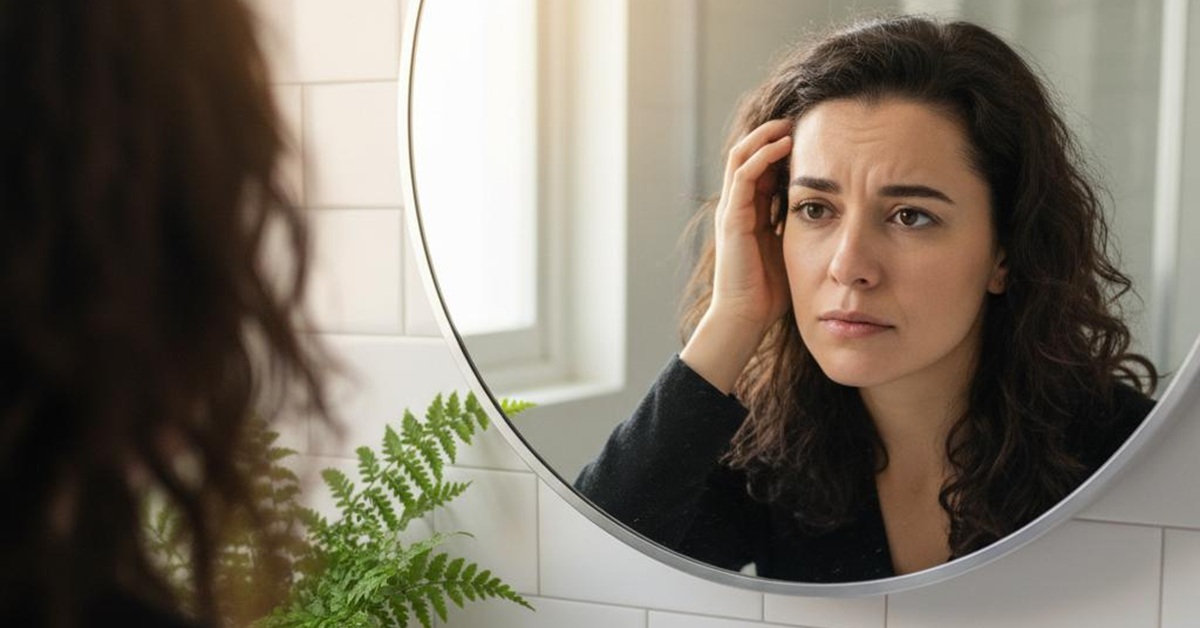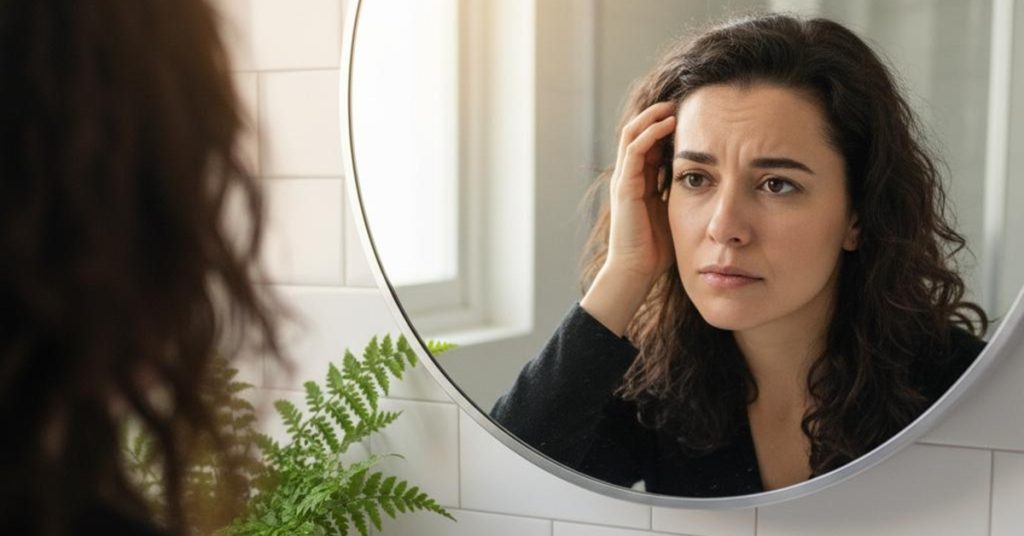Rosacea and Fall Weather: Managing Flare-Ups During Temperature Changes

If you’re one of the 16 million Americans living with rosacea, you’ve probably noticed that your skin becomes more reactive as the seasons change. Fall weather, with its unpredictable temperature swings and environmental shifts, can be particularly challenging for rosacea-prone skin. The good news? Understanding your triggers and implementing the right management strategies can help you maintain clearer, more comfortable skin throughout the autumn months.
Understanding Rosacea and Its Fall Triggers
Rosacea is a chronic inflammatory skin condition that primarily affects the central face, causing persistent redness, visible blood vessels, and sometimes papules and pustules. While the exact cause remains unknown, researchers have identified that rosacea involves dysfunction of the immune system, blood vessels, and the skin’s protective barrier.
Fall weather creates a perfect storm of rosacea triggers that can send even well-managed cases into overdrive. The combination of temperature fluctuations, wind exposure, and indoor heating systems can overwhelm your skin’s ability to maintain its delicate balance.
Temperature Fluctuations: The Primary Fall Culprit
October weather is notorious for its unpredictability. Morning temperatures might hover around 45 degrees, climb to 70 by afternoon, then plummet again by evening. These rapid temperature changes cause blood vessels in your face to dilate and contract repeatedly, leading to increased redness and inflammation.
For rosacea sufferers, this vascular response is already compromised. The blood vessels in rosacea-affected skin are more reactive and take longer to return to their normal state after dilation. When subjected to constant temperature changes, they remain in a state of chronic inflammation.
Wind and Weather Exposure
Fall winds can be particularly harsh on sensitive rosacea skin. Wind exposure increases transepidermal water loss, compromising your skin’s protective barrier and making it more susceptible to irritation. Additionally, wind often carries allergens such as pollen and dust that can trigger inflammatory responses in sensitive individuals.
Indoor Heating Systems
As temperatures drop, we begin relying on indoor heating systems that dramatically reduce humidity levels. This dry indoor air can dehydrate rosacea-prone skin, leading to increased sensitivity and potential flare-ups. The contrast between cold outdoor air and warm, dry indoor air creates additional stress on already compromised skin.
Recognizing Your Personal Rosacea Triggers
While weather is a common trigger, rosacea is highly individual. What causes a flare-up in one person might not affect another at all. Common fall-specific triggers include:
Environmental Triggers
- Sudden temperature changes
- Cold wind exposure
- Low humidity levels
- Barometric pressure changes
- Increased indoor heating
Lifestyle Triggers That Increase in Fall
- Hot beverages (as we reach for warming drinks)
- Spicy comfort foods
- Alcohol consumption (holiday parties begin)
- Stress from seasonal changes
- Changes in skincare routine
Seasonal Allergens
- Ragweed pollen
- Mold spores from fallen leaves
- Dust mites (as we close windows and turn on heat)
Keeping a rosacea diary during fall can help you identify your specific triggers. Note weather conditions, activities, foods consumed, and stress levels alongside your skin’s condition each day.
The Science Behind Weather-Related Rosacea Flare-Ups
Recent research has revealed that rosacea involves dysfunction of the innate immune system, particularly involving antimicrobial peptides such as cathelicidin. When exposed to triggers such as temperature changes, this system becomes overactive, leading to inflammation and the characteristic symptoms of rosacea.
Temperature changes also affect the skin’s microbiome – the collection of beneficial bacteria that live on our skin’s surface. Disruption of this delicate ecosystem can contribute to rosacea flare-ups, as certain bacteria produce inflammatory compounds when the balance is disturbed.
Additionally, temperature fluctuations affect the production of sebum (skin oil) and the skin’s natural moisturizing factors. This can compromise the skin barrier, making it more permeable to irritants and allergens that might trigger rosacea symptoms.
Professional Management Strategies
Topical Prescription Treatments
Several FDA-approved topical medications can help manage rosacea symptoms during challenging fall weather.
Metronidazole gel or cream remains a first-line treatment for inflammatory rosacea. It reduces inflammation and has antimicrobial properties that help control the bacterial overgrowth often associated with rosacea flare-ups.
Azelaic acid is particularly effective for both inflammatory lesions and persistent redness. It has anti-inflammatory properties and helps normalize skin cell turnover, making it especially beneficial during seasonal transitions.
Brimonidine gel provides temporary relief from persistent facial redness by constricting blood vessels. While it doesn’t treat the underlying condition, it can provide significant cosmetic improvement during flare-ups.
Ivermectin cream targets Demodex mites, which are often present in higher numbers in rosacea-affected skin. This can be particularly helpful if your fall flare-ups seem related to increased skin sensitivity.
Oral Medications for Severe Cases
For moderate to severe rosacea that doesn’t respond adequately to topical treatments, oral medications may be necessary:
Low-dose doxycycline (40mg daily) is FDA-approved for rosacea and works through anti-inflammatory mechanisms rather than antimicrobial effects. It’s particularly effective for inflammatory lesions and can help prevent weather-related flare-ups.
Other oral antibiotics such as minocycline or azithromycin may be prescribed for short-term use during severe flare-ups.
Advanced Professional Treatments
Intense Pulsed Light (IPL) therapy can significantly reduce persistent redness and visible blood vessels. Fall is an ideal time for these treatments because you’ll have reduced sun exposure during the healing process.
Laser treatments specifically designed for vascular lesions can target the dilated blood vessels that contribute to rosacea’s appearance.
Professional chemical peels using gentle acids can help improve skin texture and reduce inflammation but must be carefully selected and performed by experienced professionals familiar with rosacea management.
At-Home Management Strategies for Fall
Skincare Routine Modifications
Your fall rosacea management routine should focus on barrier repair, gentle care, and consistent protection:
Morning Routine
- Use a gentle, fragrance-free cleanser with lukewarm water
- Apply mineral sunscreen with zinc oxide or titanium dioxide (SPF 30+)
- Choose a moisturizer with ceramides and niacinamide to support barrier function
- Consider a green-tinted primer to neutralize redness
Evening Routine
- Remove makeup and sunscreen with a gentle cleansing oil or micellar water
- Follow with your gentle cleanser
- Apply any prescribed topical medications
- Use a rich, barrier-repairing moisturizer
- Consider a facial oil for extra protection on particularly dry nights
Environmental Modifications
Indoor Climate Control
- Use a humidifier to maintain 40-50% humidity levels
- Keep indoor temperatures consistent (avoid dramatic heating)
- Position yourself away from direct heat sources such as fireplaces or heating vents
Outdoor Protection
- Wear a wide-brimmed hat and scarf to protect from wind
- Use a physical barrier such as petroleum jelly on exposed areas during windy conditions
- Plan outdoor activities during milder parts of the day when possible
Lifestyle Adjustments
Dietary Considerations
- Keep a food diary to identify trigger foods
- Be cautious with hot beverages – let them cool slightly before drinking
- Limit spicy foods and alcohol, which can trigger vasodilation
- Stay hydrated with room-temperature water
Stress Management
- Practice relaxation techniques such as deep breathing or meditation
- Maintain regular sleep schedules despite daylight changes
- Consider gentle exercise such as yoga or walking (avoiding overheating)
Ingredient Awareness for Rosacea-Prone Skin
Beneficial Ingredients for Fall Rosacea Management
Niacinamide reduces inflammation and strengthens the skin barrier. It’s particularly helpful for managing the increased sensitivity that comes with weather changes.
Ceramides help restore and maintain the skin’s protective barrier, which is crucial during dry fall weather.
Hyaluronic acid provides hydration without heaviness, helping combat the drying effects of indoor heating.
Green tea extract has anti-inflammatory properties and can help soothe irritated skin.
Zinc oxide provides gentle, physical sun protection without the potential irritation of chemical sunscreens.
Ingredients to Avoid
Alcohol-based products can be extremely drying and irritating to rosacea-prone skin, especially in fall weather.
Fragrances and essential oils can trigger inflammatory responses in sensitive skin.
Physical exfoliants such as scrubs can be too harsh for compromised rosacea skin.
High concentrations of acids (glycolic, salicylic) can increase sensitivity during weather transitions.
The Importance of Consistency
One of the most crucial aspects of managing rosacea during fall weather changes is maintaining consistency in your routine. While it might be tempting to try new products or dramatically change your approach when you notice increased symptoms, this often backfires with rosacea-prone skin.
Instead, make gradual adjustments to accommodate the changing weather. If your summer moisturizer isn’t providing enough hydration, layer it with a facial oil rather than switching to an entirely new product. If you need additional protection from wind, add a physical barrier rather than changing your entire routine.
When to Seek Professional Help
While many people can successfully manage mild rosacea symptoms with over-the-counter products and lifestyle modifications, certain situations warrant professional dermatological care:
- Symptoms that worsen despite consistent management
- Development of eye symptoms (ocular rosacea)
- Persistent papules and pustules
- Significant impact on quality of life or self-esteem
- Uncertainty about whether your symptoms are actually rosacea
- Need for prescription treatments or professional procedures
Creating Your Fall Rosacea Action Plan
Successful rosacea management during fall weather requires a proactive approach. Consider creating a personalized action plan that includes:
Daily Management
- Consistent gentle skincare routine
- Environmental modifications (humidifier, appropriate clothing)
- Trigger avoidance strategies
Weekly Assessment
- Review your rosacea diary for patterns
- Adjust environmental controls as weather changes
- Evaluate the effectiveness of your current routine
Monthly Professional Check-ins
- Monitor treatment effectiveness
- Adjust medications if needed
- Plan for upcoming seasonal challenges
The Role of Professional Dermatological Care
Managing rosacea effectively, especially during challenging seasons such as fall, often requires professional expertise. DESSNA’s board-certified dermatologists can provide accurate diagnosis, prescribe appropriate treatments, and help you develop a comprehensive management strategy tailored to your specific triggers and symptoms.
Professional medical aestheticians trained in rosacea management can provide gentle treatments that support your skin’s health without triggering flare-ups. They can also help you navigate the overwhelming array of skincare products to find those most suitable for your sensitive skin.
Looking Ahead: Preparing for Winter
The management strategies you implement during fall will set the foundation for winter rosacea care. As temperatures continue to drop and indoor heating increases, your skin will face even greater challenges. Starting aggressive barrier repair and trigger management now can prevent more severe problems later in the season.
Consider fall your training period – a time to fine-tune your routine, identify your specific triggers, and establish the habits that will carry you through the harsher winter months ahead.
After all, fall weather doesn’t have to mean inevitable rosacea flare-ups. With proper understanding of your triggers, consistent management strategies, and professional support when needed, you can maintain comfortable, healthy-looking skin throughout the seasonal transition.
Remember that rosacea management is highly individual, and what works for others may not work for you. Be patient with your skin, consistent with your routine, and don’t hesitate to seek professional guidance when needed.
Ready to take control of your rosacea this fall? Schedule a consultation with one of our board-certified dermatologists to develop a personalized management plan that addresses your specific triggers and concerns.




